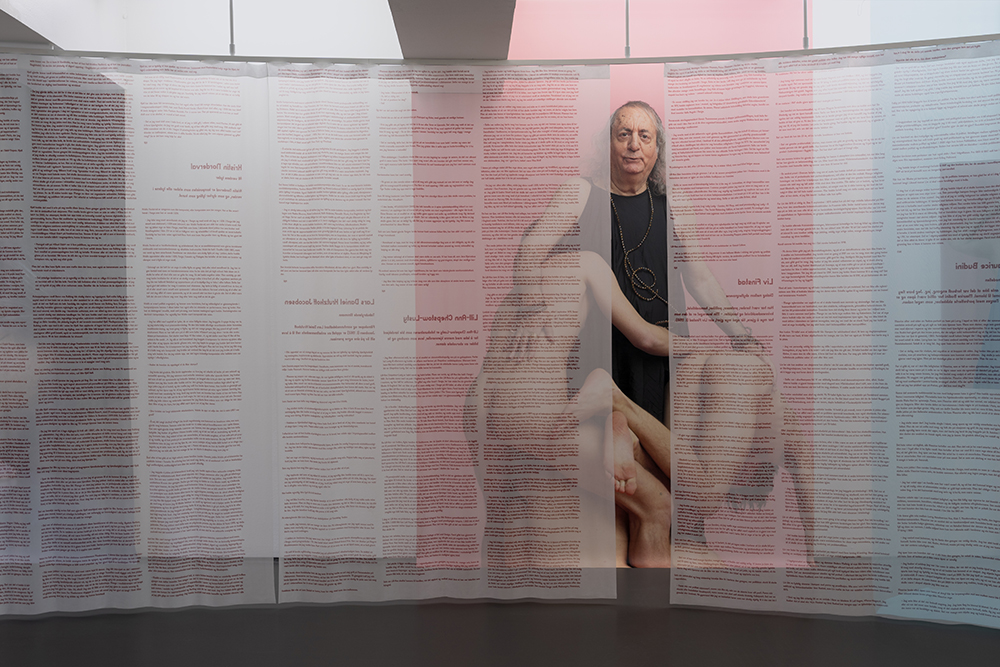“I have been a practising lesbian for over 20 years”. This was the slightly bizarre, and completely unplanned, statement I started off my presentation with to the assembled guests for the “internal kick-off” for Skeivt Kulturår at the National Museum in Oslo. The designation of 2022 as the Queer Year of Culture marking 50 years since the repeal of section 213 of the Norwegian Criminal Code that criminalised sex between men was a joint venture by the National Museum, the National Library and the Skeivt Arkiv – the queer archives – at the University of Bergen. 1 The audience on this November afternoon in 2019 comprised representatives from these institutions along with a host of other arts organisations, as well as some individual art practitioners. I had planned my presentation to show the explicitly queer curatorial approach I had adopted for Munchmuseet on the Move (2016–2019), mainly to illustrate that even a mainstream organisation like the Munch Museum had been working with queer artistic approaches well in advance of this celebratory year of queerness. I hadn’t planned on making it personal.
- https://www.nasjonalmuseet.no/en/aktuelt/2021/celebration-of-queer-culture-year/
My introduction was inspired by one artist who got up and stated their name, followed by “and I am a lesbian”. I can’t speak to her motivation, but it was a welcome break from the institutional representatives with long titles and who, with a few exceptions, did not identify as LGBTQI+ or have a track record of supporting queer artists or artistic approaches. That irked me, so as well as being in solidarity with my queer “sister”, my statement was a performance of lived experience as opposed to mere institutional representation. It was more than a little defensive, and in retrospect, I have mixed feelings about that. I unintentionally offended people with less “seniority” than me – I don’t even know if my 20-year estimate was correct – and I left many, including myself, pondering what constitutes “practising” lesbianism. Why did I feel the need to draw a line between those who “practice” and those who don’t? Why not let the mainstream in on a celebration of a legal milestone for many queer people? Why was I so ungenerous? In my defence, this response is not uncommon for people in marginalised communities whose “cause” is suddenly propelled into a wider arena of general publicity. In the Norwegian daily newspaper Klassekampen in January 2023, Hege Skarrud, wrote that she was grateful the year was over after being “dragged through a heteronormative dogma in 2022”. 2
- Hege Skarrud, ‘Fri oss fra heteroblikket’, Klassekampen, 13.1.2023, page 2.
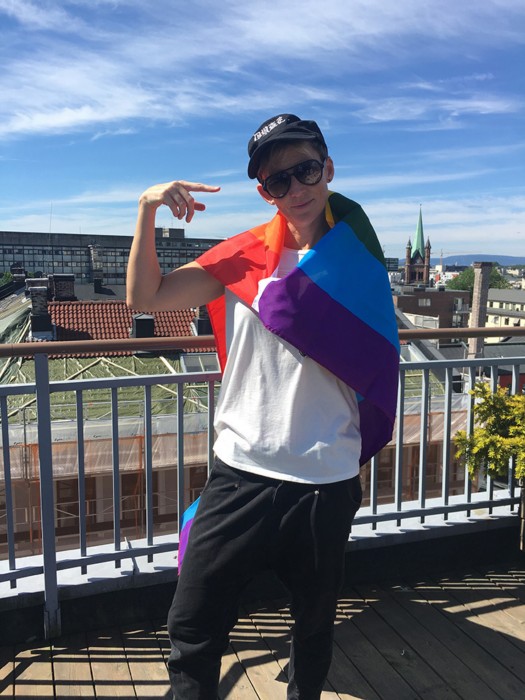
Before it had even begun, I was concerned about how this year of celebration would affect long-term initiatives in the Norwegian art scene. There is a risk when something is a one-off; it can become an excuse for making a token gesture, and then never again. Time will tell, of course, but it was striking that so many contributions to Skeivt Kulturår consisted of temporary events, curated by people who were engaged as freelancers or on short-term contracts. This does not lead to structural change. Nor was there much recruitment to even temporary institutional experience, as a number of the same, well-known practitioners were hired by several different museums and galleries. 3 There was also a lack of diversity in those who received the opportunity to programme. The dominance of white and cis voices was not only a feature of the curatorial approaches during Skeivt Kulturår but also of the academic treatment of the topic. For example, in what was supposed to be a special issue of the peer-reviewed art history journal Kunst og Kultur, there were only three contributors, all of whom were cis-male and white. 4 With a call for papers that did not offer any financial compensation, this was perhaps not surprising. At the risk of stating the obvious: not everyone can afford to spend time writing texts and not get paid – perhaps only those that have institutional positions with research time, a highly exclusive group that reflects the inherent biases of higher education and the museum system.
- For instance, Bjørn Hatterud being engaged as an external curator by The Vigeland Museum, The National Library, Fotogalleriet and KODE 2 in Bergen; Tommaso Speretta by Henie Onstad Kunstsenter and Stavanger Kunstmuseum, Tine Semb in Karma Klubb* by four different museums (the National Museum, Preus, MUNCH and KODE 4).
- The contributors were Øystein Sjåstad, Mathias Danbolt and Jarle Tollefsrud. See Kunst og Kultur, volume 105 (2022) https://www.idunn.no/toc/kk/current.
With the limited amount of funding awarded to Skeivt Kulturår from the Arts Council Norway, there was also the risk that scarcity would breed competition from the many different organisations and artists who make up a diverse and complex “queer community” in Norway. 5 Indeed, before the year and the money had arrived, there were those who laid claim to being “first”, to being “the only”, setting up false dichotomies and timelines, and conflating different arenas for art: professional and amateur. 6 The Arts Council did not help in this regard. Unlike its other awards, which are peer-reviewed, the applications for Skeivt Kulturår were awarded by bureaucrats. The allocations were therefore strange, with some highly worthy applicants, in my opinion, not receiving funding. My feeling was that queer perspectives were not considered important enough to warrant sufficient support to set up professional projects, nor that these should be assessed according to criteria of artistic excellence that are usually employed by the Arts Council. This sense of Skeivt Kulturår being an aberration was also reflected in the mainstream media, capped by Lars Elton writing in Dagsavisen in June that “some might say” that the amount of exhibitions that “reached its peak in the jubilee year of 2022” was “exhausting” and could be “excluding [to] straight, heterosexuals […].” 7 Six days later a gunman attacked patrons in and around London Pub, Oslo’s oldest gay bar, and the Oslo Pride Parade was cancelled.
- The initial round of applications in 2021 saw 266 applications for 5 million kroner (25 awarded), whereas there were 104 applications for slightly lower sum in April 2022 (30 awarded). By comparison, 19 million kroner was awarded to the Ibsen Jubilee in 2006. https://www.forskerforum.no/kamp-om-penger-til-skeiv-kultur/
- Mathias Skaset, ‘Skeiv historie på museum’, webinar by Norsk Museumsforbund, 10 December 2020.
- Lars Elton, ‘Pride over alt på Oslos museum’, Dagsavisen, 19. June 2022.
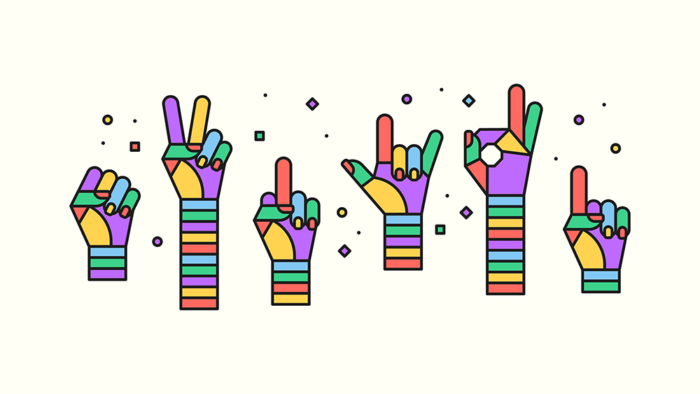
Despite the tenor of these initial paragraphs, my aim is not to present a crotchety chronicle of complaints about Skeivt Kulturår. Instead, I would like to highlight some of the initiatives across Norway in 2022. This is not a complete list, but an attempt to give my personal impression of a vast array of different projects, including those that were not formally part of Skeivt Kulturår. Indeed, it is not easy to tell what was and wasn’t part of this year of queer culture. Some institutions would list that an exhibition or event was their contribution to the anniversary, whereas others carried on queer programming without highlighting it as such. There is no definitive list of participants to the year of celebration, rather there was a website with a brand pad for the graphic identity of Skeivt Kulturår and a Facebook group set up by representatives from the three initiating institutions. 8
- https://www.facebook.com/groups/skeivtkulturar2022
In January 2022, Andreas Breivik writing in Kunstkritikk highlighted seven contributors to Skeivt Kulturår: The National Museum and the Architecture Museum, KODE, the Vigeland Museum, Henie Onstad Kunstsenter, Bergen Kunsthall, Kunsthall Trondheim and Fotogalleriet. 9 This was not an exhaustive list, and does not include the exhibition Close(t) at the Oslo Museum: Bymuseet, which was a retrospective of the annual queer art exhibition that has been running since 1985, put together by the community organisation Pride Art and the feminist art collective Sfinxa. With their open approach to programming in which anyone can participate, and packed displays, these exhibitions have been mostly overlooked by the professional art field. However, the 2022 retrospective was included in Mathias Danbolt’s text for Kunst og Kultur, where he also reflected on the factors that led to these artistic expressions operating in the blind spots of the Norwegian mainstream art world. 10 While acknowledging this, for the purposes of brevity I will focus my attention on projects carried out in 2022 by art professionals – in the sense that they are either paid for their work or have the education and/or experience indicative of a profession. With the proviso of gaps and omissions, the projects that have come to my attention in 2022 can be roughly divided into three groups, based on the temporal focus of the project: the past, the present, and the future.
- Andreas Breivik, ‘Skeive blikk overalt’ in kunstkritikk.no, 17.1.2022 https://kunstkritikk.no/skeive-blikk-overalt/
- Mathias Danbolt, ‘Fortidsminner’ in Kunst og Kultur, volume 105 (2022) https://www.idunn.no/doi/10.18261/kk.105.4.2#fn16
Queering the collection
The first group includes a cluster of institutions – largely museums – that departed from their own institutional history or collections. The exhibition The Queer Gaze: From Classical Antiquity to the Present Day at KODE 2/Lysverket in Bergen showed 160 works from the museum’s collection, supplemented by loans. 11 The exhibition had an historical volume I, and a volume II with 12 contemporary artists that opened later. 12 In many ways, the smaller exhibition was more precise than volume I with its time span of “antiquity to the present day”. This led to charges of superficiality and lack of focus from more than one commentator. 13 The stated aim of the exhibition was to be norm critical, as Anette Basso wrote on the KODE website: “The concept of queerness is not only about non-normative sexualities, but also about breaking away from gender norms.” This led to a confusing conflation of the kinds of norms that were transgressed: from women breaking ground by being artists in the 1800s to men’s sartorial choices that may seem camp from today’s perspective, but the situated nature of a “queer gaze” was not problematised. To me, the historical exhibition as a whole seemed like a hastily assembled array of artworks that might appear “a bit gay”. Volume II with contemporary artists was more compelling with a combination of freshness through the inclusion of relatively young artists, such as Chai Saedi, and an acknowledgment of the importance of on-going initiatives, such as the display of the collection by the queer-feminist platform FRANK, which was run Liv Bugge and Sille Storihle from 2012 to 2022.
- https://www.kodebergen.no/en/collections/year-of-queer-culture-2022 This art historical exhibition opened in May and was curated by Mathias Skaset and Bjørn Hatterud. The historical exhibition was supplemented by events such the Bergen Kiki Ball and by a contemporary art display that opened in September.
- https://www.kodebergen.no/en/whats-happening/exhibitions/the-queer-gaze
- Tuva Mossin, ‘Sapfo til unnsetning’ in Kunstkritikk, 24.5.2022 https://kunstkritikk.no/sapfo-til-unnsetning/ and Danbolt, ibid.

Matching KODE in terms of scale, and taking its title from a series of colour prints by photographer Rotimi Fani-Kayode (1955–1989), Every Moment Counts – AIDS and its Feelings at Henie Onstad Kunstsenter presented over 200 works from 1982 until today from over 60 international artists. Guest-curated by Tommaso Speretta in collaboration with Ana Maria Bresciani, the project loosely departed from the Kunstsenter’s 1993 exhibition Tema: AIDS. Speretta is a doctoral researcher on the representation of the AIDS crisis in independent art video and film in the 1980s and 1990s and was also invited to curate the three-part film screening, I am/We are at Stavanger Kunstmuseum. 14 While the return to a prior exhibition in the institution’s history made sense in the case of Henie Onstad, it did feel symptomatic of a tendency to foreground HIV/AIDS the moment the topic of “queer art” is broached. This is perhaps indicative of a mainstream art history in which the most prominent queer approaches have been those linked to activism with ACT UP or the well-known works by Felix Gonzalez-Torres, David Wojnarowicz and others. For Andreas Breivik, writing his second article on Skeivt Kulturår for Kunstkritikk at the end of 2022, this emphasis on HIV/AIDS was part of creating an aversion to gay sex – which continued from its prohibition to the current day, and was strengthened by its pathologisation during the height of the epidemic. 15
- https://stavangerkunstmuseum.no/events/i-am-we-are-1#:~:text=%C2%ABListen%20to%20this%C2%BB%20er%20Tom,og%20en%20oppfordring%20til%20handling [only in Norwegian and only one film night listed]
- Andreas Breivik, ‘Festen må ta slutt’ in Kunstkritikk, 29.11.2022 https://kunstkritikk.no/festen-ma-ta-slutt/
Preus Museum in Horten was in the fortunate position of being in possession of glass negatives of private photographs from local studio photographers Marie Høeg (1866–1949) and Bolette Berg (1872– 1944). These staged, turn-of-the-century photographs of the cross-dressing lesbian couple and their friends were discovered in the 1980s. However, they were brought to broader attention in 2013 by the exhibition Marie Høeg Meets Klara Lidén by FRANK. 16 Curator Hilde Herming used the collection to stage an exhibition of works by other artists including a social project on photography and self-staging by students from the local high school. In PARADE at the Vigeland Museum in Oslo, the two invited curators looked at the collection of Gustav Vigeland with a queer gaze that entailed finding and displaying objects that had rarely been seen before and that were characterised by a form of norm transcendence. 17 Given that Hatterud was the co-curator on both the Vigeland exhibition (together with Håkon Traaseth Lillegraven) and The Queer Gaze at KODE (together with Mathias Skaseth), it is perhaps not surprising that the language employed is similar, focusing on the transgression of norms. Perhaps making up for the fact that there was “nothing queer about Vigeland or his art”, the exhibition was accompanied by events in the nearby Frogner Park with explicitly queer protagonists. 18 In a more speculative turn at the Polar Museum in Tromsø, Polarhistorie på skeiva [Queer polar history] departed from Klaus Rifbjerg’s 2002 novel that proposes that the two polar explorers Fritjof Nansen and Hjalmar Johansen had a sexual relationship in order to queer objects in their collection. 19 Despite its title, The Future is ___ at Trondheim Kunstmuseum “looked back to the ‘70s” with its stated wish “to challenge a traditional, heteronormative understanding of the world by activating the entire sensory apparatus”. 20 Of these museum displays, the exhibition at Preus Museum was perhaps the most interesting to me as it built on a work that was already in the collection – and created an impetus for finding more “lost” negatives – as well as interweaving artworks, furniture, commissioned performances and workshops into a coherent whole. In terms of longevity, the exhibition also resulted in several acquisitions to the collection and plans for a permanent display dedicated to Høeg and Berg.
- This work was initially FRANK’s contribution to the exhibition The Beginning is Always Today (2013–2014) at SKMU – Sørlandets Kunstmuseum, curated by Karin Hindsbo and Else-Brit Kronenburg. It was also printed in FRANK’s artist book Voluspå in 2013. See Mathias Danbolt, ‘Breaking Waves: Tuning into Queer History with FRANK’s Voluspå’ in Sille Storihle (ed), FRANK, pp. 158–165.
- PARADE was conceived by external curators Bjørn Hatterud and Håkon Traaseth Lillegraven and included talks and two performances as part of its «side program»: Mette Edvardsen and Ulf Nilseng with Corentin JPM Leven.
- Quote from the two curators in Norwegian on the Vigeland Museum website: https://vigeland.museum.no/utstillinger/parade
- Klaus Rifbjerg, Nansen og Johansen-et vintereventyr (2002).
- https://trondheimkunstmuseum.no/en/upcoming-exhibitions/the-future-is_____
Live moments
At all these museums, live events were part of the “side programme” of the exhibitions, but there were several performances and discursive events with a queer thematic which took centre stage in 2022. From larger institutions these included MUNCH’s performance commissions from Bendik Giske and Brendan Fernandes, and the performance weekend CRUISING UTOPIA: Queer Futurities by Bergen Kunsthall, curated by Nora Swantje-Almes. 21 Taking its title from José Esteban Muñoz’s Cruising Utopia: The Then and There of Queer Futurity (2009), this project consisted of a series of performances on the M/S Midthordland and at various places along the ship’s route by a mix of Bergen-based and international artists. Despite the rain, it was a warm and well-composed gathering of people and perspectives with an emphasis on playful speculation and empowerment. As Jakob Myklebust Huus noted in Kunstkritikk, its temporal proximity to shootings in Oslo, which took place just a few hours earlier, enhanced the relevancy of Cruising Utopia. 22 There was also a series of events throughout the year. In November, Bergen Kunsthall also presented a two-day festival of performances and talks. Titled Gestures and Nods: A Seminar on Cuir/Queer Approaches to Knowledge Sharing Through Performance, the festival was an MA project in curatorial practice by Itzel Esquivel, supported and co-produced by Office of Contemporary Art – OCA. 23
- https://www.kunsthall.no/en/events/2516-2022-06-26/
- https://kunstkritikk.no/blunk-og-du-gar-glipp-av-det/
- https://www.kunsthall.no/en/events/2615-2022-11-25/
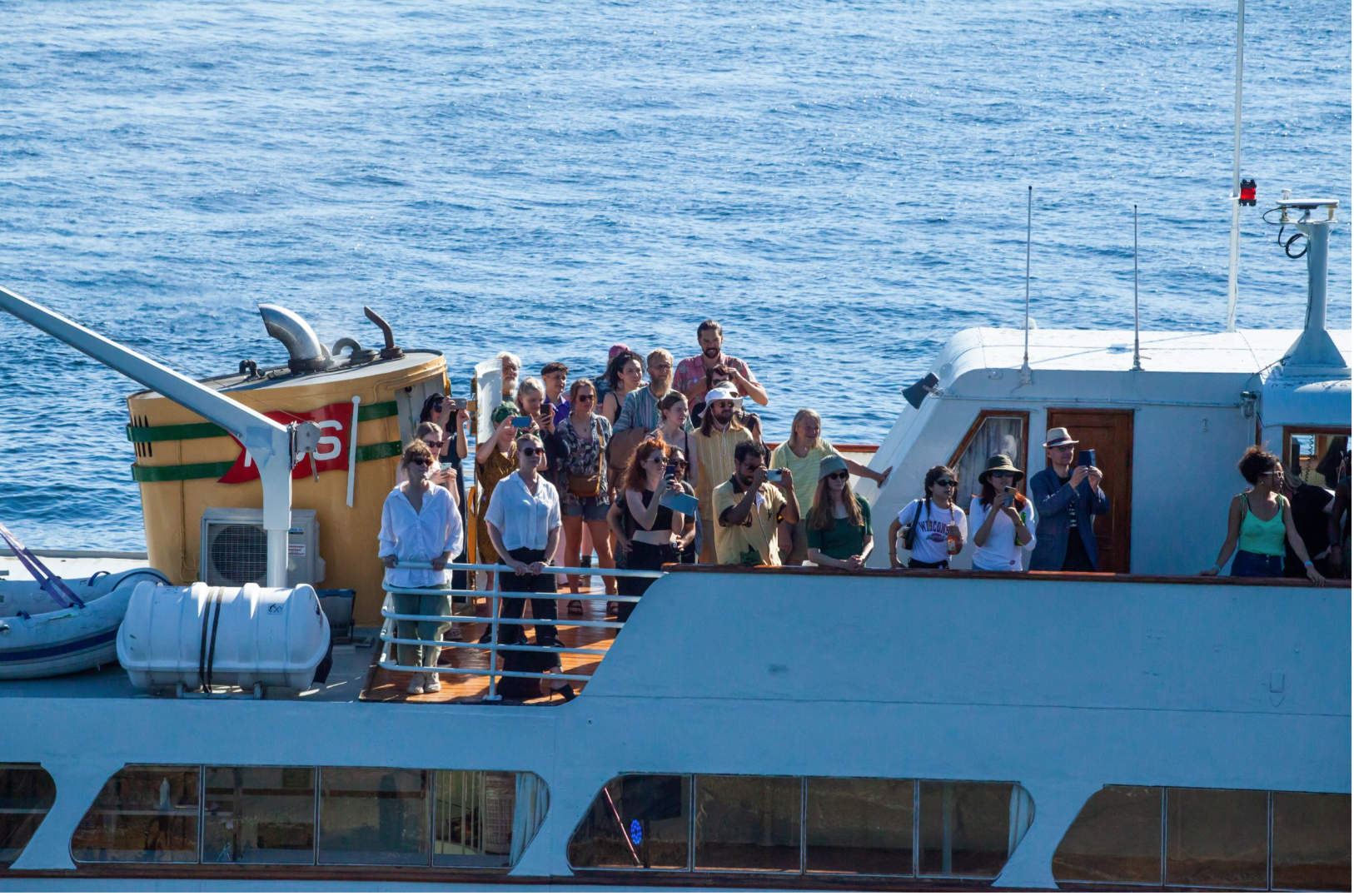
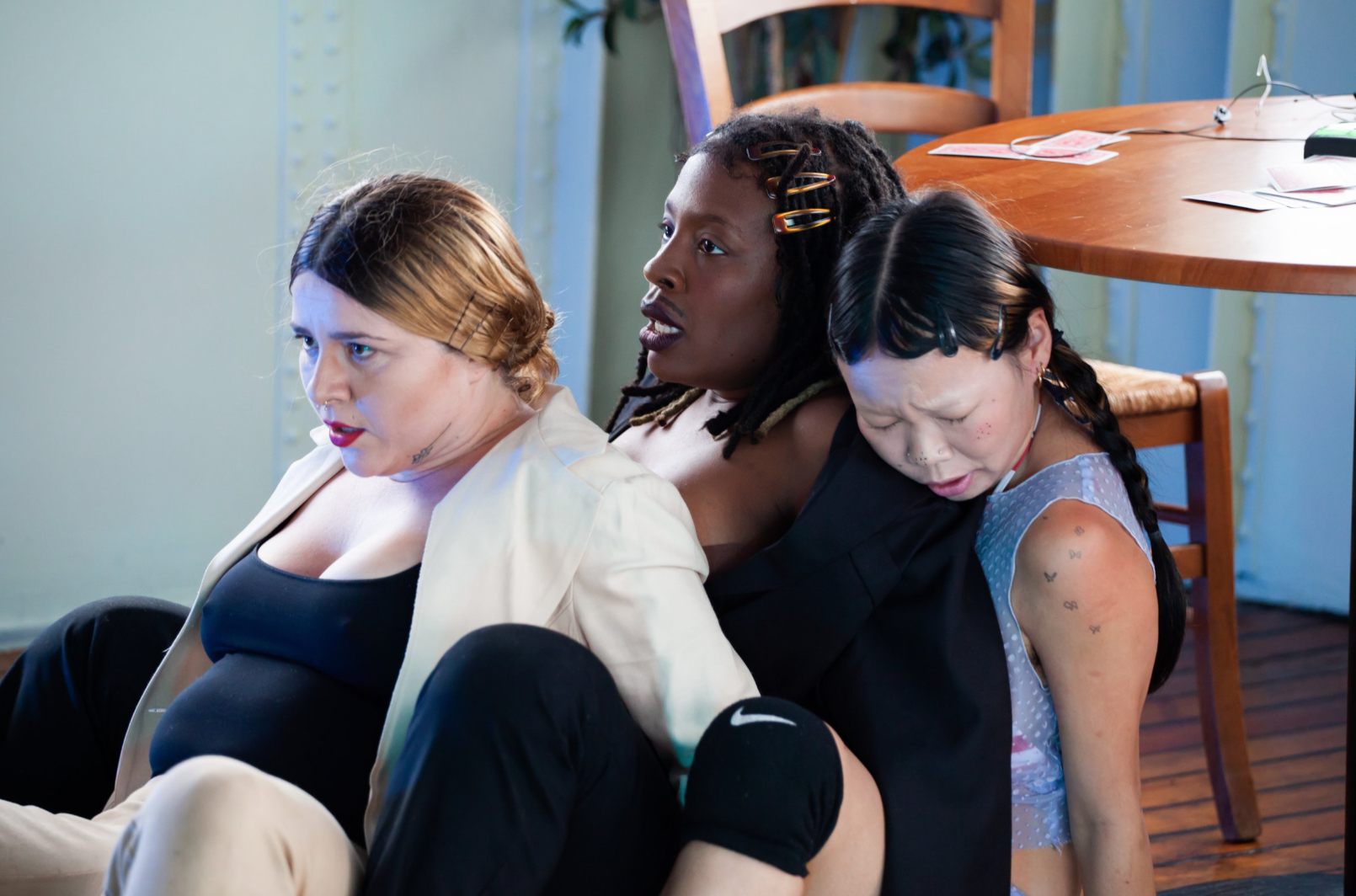
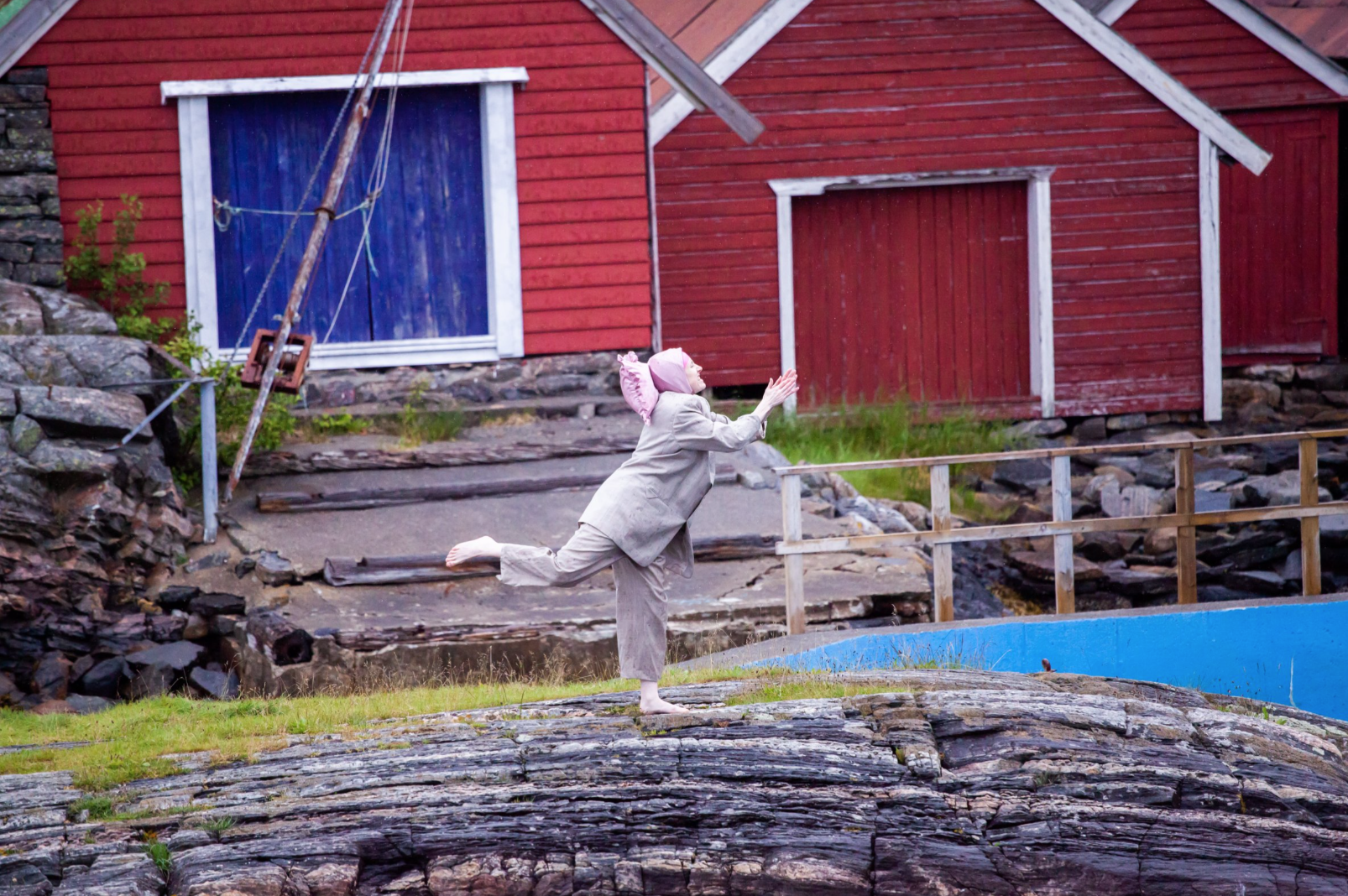
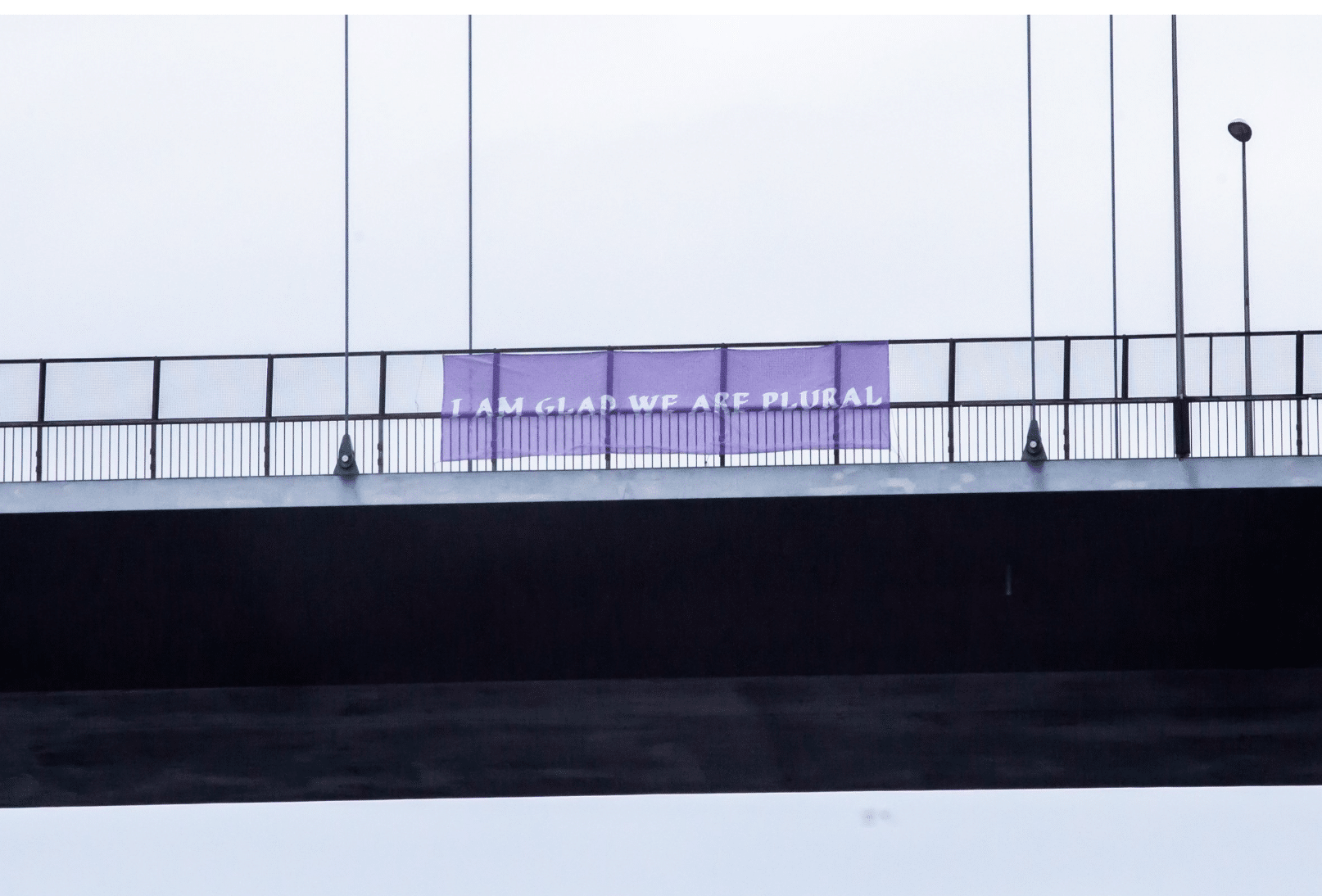
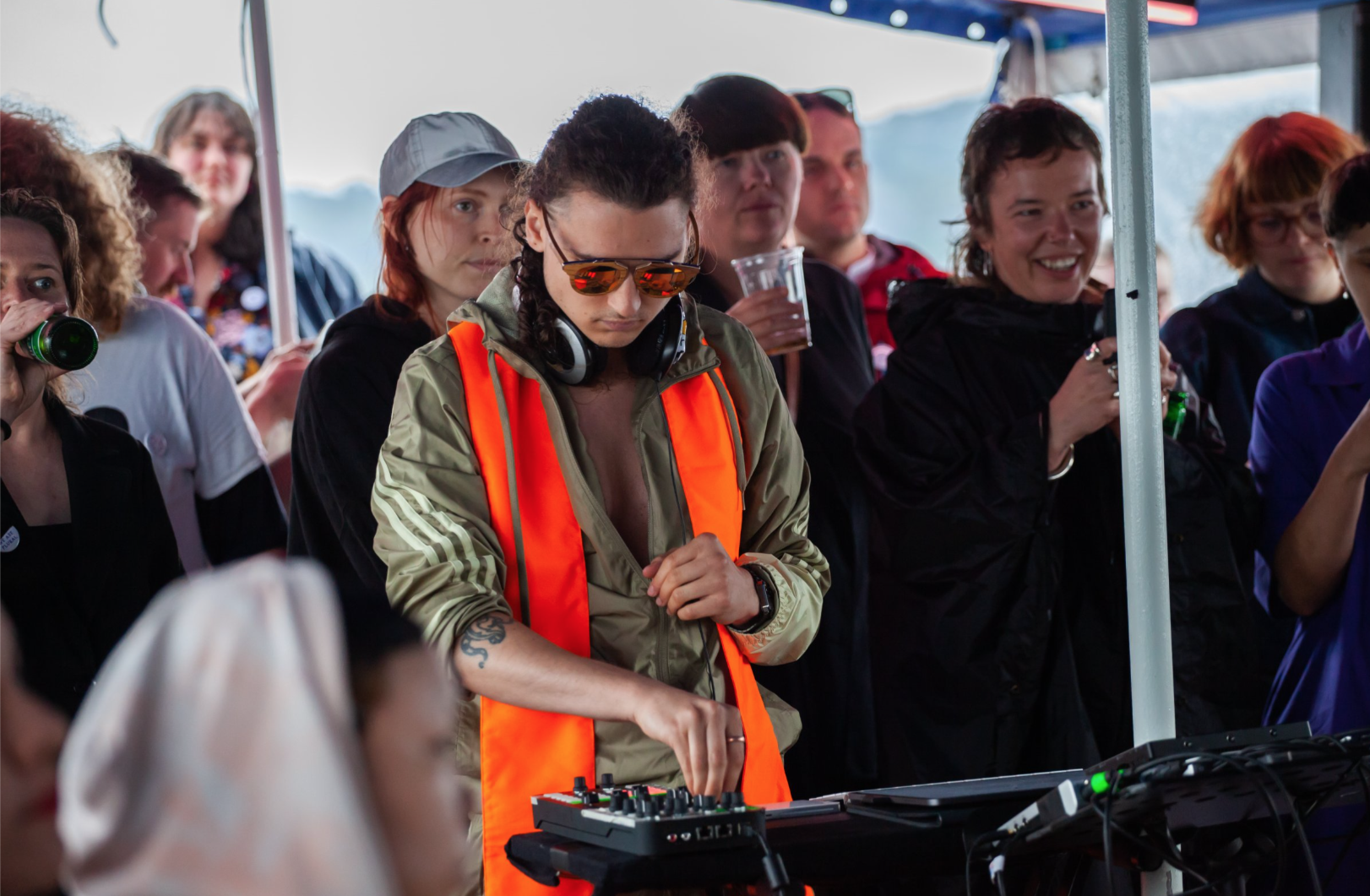
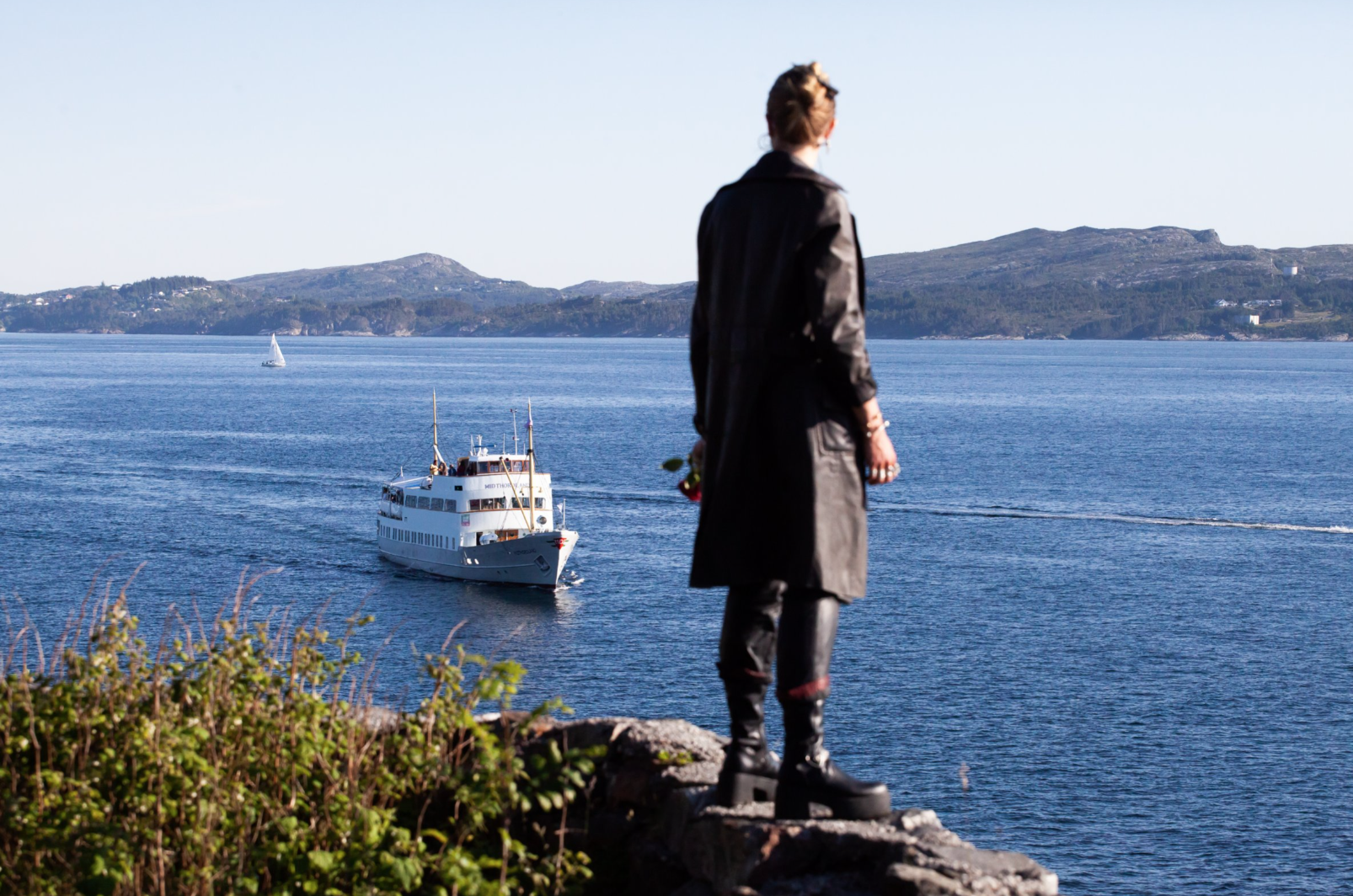
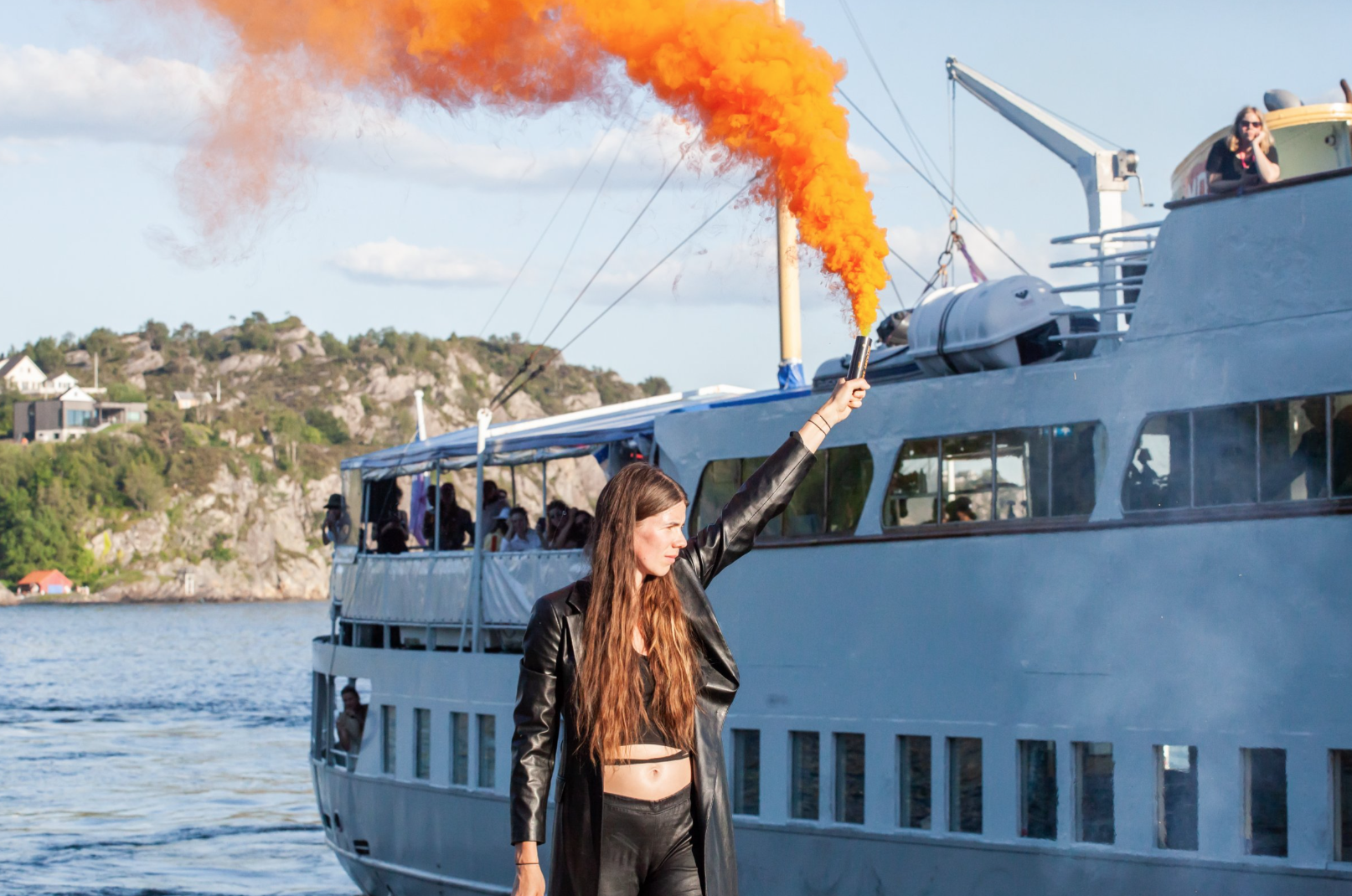
Artist-run projects with an emphasis on queer programming received scant attention and, in most cases, very little funding to continue their work. An exception was Karmaklubb*, “an autonomous nomadic queer club concept and conversational platform”. 24 Run by Tine Semb, Karmaklubb*’s events began in 2018 and were initially in Oslo, but the platform now has a nationwide – and international – portfolio. Semb received the highest award from the Arts Council’s first round of funding with 370.000 NOK for the project FriDa world with drag artist Hani Assaf. 25 In addition, Karmaklubb* provided the launch party for Skeivt Kulturår in March 2022, collaborated with four large-scale institutions as part of the Queering the Museum series, and ran a number of other events. Another now ambulating artist-run initiative is Kunstplass Contemporary Art have been programming queer exhibitions and events since 2012, including the exhibition Mina/Meg (2016) at the Museum of Cultural History in Oslo as part of a longstanding collaboration with South African artist Zanele Muholi. 26 By their standards, Kunstplass had a quiet year in 2022.
- https://karmaklubb.com/
- https://www.kulturradet.no/stotteordning/-/vis/tilskudd-til-skeivt-kulturar-2022/tildelinger/2021/19.+november+2021
- Kunstplass is run by curator Vibeke Hermanrud and artist Henriette Stensdal and has changed its name in accordance with its various adresses http://www.kunstplass5.no/utstillinger_events.html
There were more artist-run queer projects that have emerged in recent years all over Norway, and although I have not been able to attend many of them, I would like to take the opportunity to highlight them. For example, Hot House is an initiative for experimental, time-based art, founded in 2020 by visual artist Anette Gellein and cultural worker Marie Midttun Skretting in Stavanger, who “focus on womxn and queer artist in the art field, and welcome work in progress as a method for developing community and exchanging of ideas”. 27 In August, they collaborated with Bergen-based Asterisk on a two-day festival of films, talks and performances at Studio 17 in Stavanger, and a club night. 28 Asterisk, run by artist Kaeto Sweeney, is a “queer multidisciplinary event and platform” also founded in 2020. 29 Bergen Kjøtt hosted Asterisk Film Club in January with Derek Sargent, an artist who runs an ongoing performative research project, thegraveproject.com with Jess Miley where extensive research culminates in visiting the graves of people who have had an impact on queer and non-normative culture. 30 Bergen Kjøtt, under Eva Rowson’s leadership, also hosted Planningtorock together with Asterisk and the music collective Konsept [X] in April, as well as Trans Pride and Trans Awareness week, and the performance Batty Bwoy by Harald Beharie as part of Oktoberdans. 31
- http://s17.no/hot-house-presents-performance-fest/?lang=en
- https://www.contemporaryartstavanger.no/arts-calendar/hot-house-presents-performance-fest/
- https://www.kaetokato.com/asterisk-club-nights
- https://filmfreeway.com/ASTERISKFILMKLUBB
- https://www.bergenkjott.org/kalendar/oktoberdans2022battybwoy
- https://openoutfestival.com/
- https://www.kurant9000.no/About
- https://ergi.xyz/om_ergi.html
- https://skienskunstforening.no/2022/12/03/apning-lordag-10-desember-2022/
What sets institutions and artist-run initiatives in the “Live moments” section apart is that they have been working with queer artistic approaches that transcend the anniversary year of 2022. This distinguishes them from events such as the two-day seminar Lilia Prado is a Superstar – What is queer history, readymade? at the Astrup Fearnley Museum in October. 36 This well-publicized and evidently well-funded event saw several renowned international artists and theorists arrive in Oslo for the weekend, including a keynote lecture by Elisabeth Freeman. My sense was that the symposium, organised by Astrup Fearnley director Solveig Øvstebø and Hendrik Volkerts from Moderna Museet i Stockholm, lacked local anchoring. The programme did include Copenhagen-based Mathias Danbolt’s diary from Skeivt Kulturår as a form of local perspective, but the organisers took an approach to hosting that meant that the speakers were kept separate from the audience. Those attending were deprived of the opportunity to engage with the eminent guests beyond asking a question in a highly formal and documented environment. This seemed antithetical to the community, flat-hierarchy spirit that characterizes many queer approaches, including those on stage. Astrup Fearnley has one of the largest collections of queer artists among Norwegian museums, which includes Elmgreen & Dragset, Klara Lidén, Juliana Huxtable, Zanele Muholi and Felix Gonzalez-Torres. This two-day, one-off event, therefore felt like a missed opportunity to make a truly profound impact in 2022.
- https://www.afmuseet.no/lilia-prado-is-a-superstar/
Beyond 2022
In terms of exhibitions, several institutions had projects that were more loosely connected to queer approaches and part of more long-term programming. These included three exhibitions at Kunsthall Trondheim: Sex Ecologies that “explored gender, sex and sexuality in the context of ecology” with the work of nine international artists; Kunna Guanna Concha, which is on until 12 March 2023 and “focuses on matriarchal lineages and aims to bring forth Indigenous, queer, and eco-feminist perspectives that have largely been excluded from the Western historical canon”; and the Kunsthall’s contribution to the Hannah Ryggen Triennale 2022 in the form of the international group exhibition Unweaving the binary code. 37 With the explicit aim of “[e]xploring the legacies of cyberfeminism, nonhuman technologies, nonbinary gender, and glitches”, Unweaving the binary code has much in common with the MUNCH Triennale – the Machine is Us. 38 Inspired by queer methodologies, the curatorial premise of The Machine is Us 39 asked “what if?” in the sense of “what could be’ or “what is the alternative” after Muñoz’s definition of queerness as a horizon, “a longing that propels us onward, beyond romances of the negative and toiling in the present”. 40 It was not an exhibition that was billed as “queer” but where discursive events and accompanying texts 41 framed it as such, as highlighted by Eirik Zeiner-Henriksen in his review in Billedkunst. 42 The seminar Who is the machine? in conjunction with the opening of the MUNCH Triennale was discursively related to the programming around Bergen Kunsthall’s Cruising Utopia, and its keynote speaker, Jack Halberstam, also travelled to Bergen as part of his invitation to MUNCH. The seminar in Oslo was conceived in collaboration with Liv Brissach, an Oslo-based writer and curator I have had the pleasure of being in critical dialogue with since we wrote our respective reviews of Hen – flytende kjønn [They – fluid gender] at Vestfold Haugar Kunstmuseum for Billedkunst in 2018. This exhibition, and Børre Sæthre’s installation The Sound of the Atom Splitting at Nitja in 2021, which Mathias Danbolt discusses in-depth in his Kunst og Kultur text, are but two examples of programming of queer exhibitions that preceded Skeivt Kulturår. 43
- https://kunsthalltrondheim.no/en/utstillinger/kunna-guanna-concha
- https://nkim.no/en/hrt2022/unweaving-the-binary-code
- https://www.munchmuseet.no/en/exhibitions/archive/2022/the-machine-is-us/the-machine-is-us/
- José Esteban Muñoz, Cruising Utopia, The Then and There of Queer Futurity (New York University Press, 2009), p. 1.
- https://www.munchmuseet.no/en/exhibitions/archive/2022/the-machine-is-us/world-building-and-unbuilding-through-a-queer-lens/
- Eirik Zeiner-Henriksen, ‘Gjennom interaksjoner skapes verden’ in Billedkunst no. 4 (2022), pp. 104–111.
- https://www.nitja.no/exhibitions/the-sound-of-the-atom-splitting
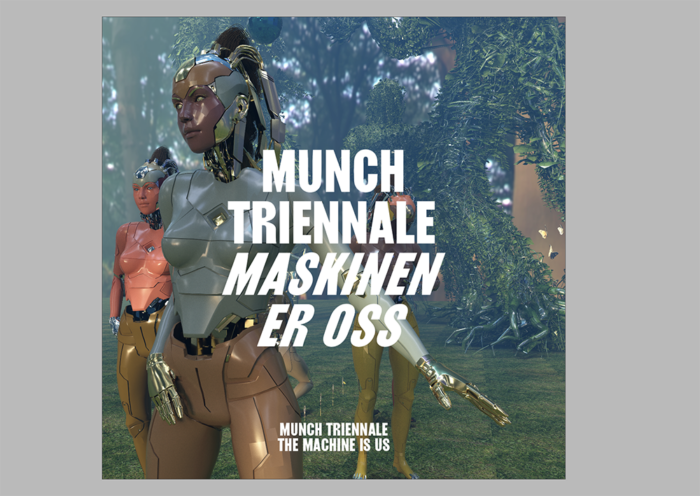
The National Museum, being one of the initiators of Skeivt Kulturår, made a relatively slight contribution to their programme in 2022, which was limited to a series of films by international filmmakers entitled Motstrøms [against the tide]. 44 However, the National Museum also initiated Queer Islamic Art, a research project that will result in an exhibition in 2025, curated by Noor Bhangu in cooperation with the artist Hanan Benammar. Moreover, the project Skakke folkedrakter [queer national dress] will start in 2023 and run until 2025. 45 The Architecture Museum, part of the National Museum, was host to the Oslo Architecture Triennial entitled Coming into Community in 2022, which featured an installation of a queer bar with a series of events and workshops by Swedish collective Mycket. 46 Mycket was part of FRANK’s celebration of the 40th anniversary since the decriminalization of sex between men in 2012, and an oblique nod to this event was included in the form of Sille Storihle’s film Stonewall Nation in the exhibition. Nonetheless, I would have liked a more explicit acknowledgement of FRANK’s role in bringing Mycket to Oslo ten years ago and contributing to the Swedish collective’s restaging of historical lesbian bars from around the world in the form of an homage to legendary lesbian bar, Potpurriet. This night out in Oslo is one of my most treasured memories of queer moments in the city.
- https://www.nasjonalmuseet.no/en/aktuelt/2022/motstroms/
- https://www.nasjonalmuseet.no/utstillinger-og-arrangementer/andre-steder/utstillinger/2023/skakke-folkedrakter/ [only in Norwegian]
- https://www.nasjonalmuseet.no/en/exhibitions-and-events/the-national-museum--architecture/exhibitions/2022/oslo-arkitekturtriennale-2022-eng/
Fotogalleriet in Oslo was perhaps the institution that most comprehensively embraced Skeivt Kulturår by dedicating the whole year of programming to queer approaches. These included Claiming Space, an exhibition and events programme curated by Skeiv Verden/Queer World 47 and Queer Icons, 48 a series of portraits by legendary gay photographer Fin Serck-Hanssen. Whereas the latter was a celebration of those committed to an historical struggle, the former was a snapshot of younger artists working today. Fotogalleriet also showed a commitment to more long-term queer approaches by recruiting a member of Queer World, who had worked on the public programme for Claiming Space, to a permanent position with the gallery. In that sense, Fotogalleriet is the only institution that has structurally altered their organisation as a result of Skeivt Kulturår. In most of the other institutions, the queer programming has been carried out by external, temporarily-contracted curators. As Tuva Mossin noted in her second text on The Queer Gaze at KODE for Kunstkritikk, the question is whether the permanent members of KODE’s staff now have the tools to work consciously on including queer perspectives in their museum practice going forward. 49 There are some positive signals, from perhaps unlikely places, as Jorunn Sem Fure at Telemark Museum commented to queer magazine Blikk that Skeivt Kulturår had been an “important kick up the arse” when it came to incorporating queer perspectives going forward. 50
- https://fotogalleriet.no/exhibition/claiming-space/
- Queer Icons (Skeive Ikoner) was a project by Fin Serck-Hanssen, Bjørn Hatterud, and Caroline Ugelstad Elnæs .The exhibition design was developed by the HAiKw/ designers’ collective consisting of Ida Falck Øien and Harald Lunde Helgesen. https://fotogalleriet.no/no/exhibition/queer-icons/
- Tuva Mossin, ‘Det skjeve museet i Bergen’ in Kunstkritikk, 11.10.2022 https://kunstkritikk.no/det-skjeve-museet-i-bergen/
- https://blikk.no/telemark-museum-skeivt-kulturar-var-en-oyeapner/228671?fbclid=IwAR3vOy8eLa_pGKxjZweA1T6tM7Yv-6G-HEMFKWAplXdYEbFSyq6lq2rcnk4
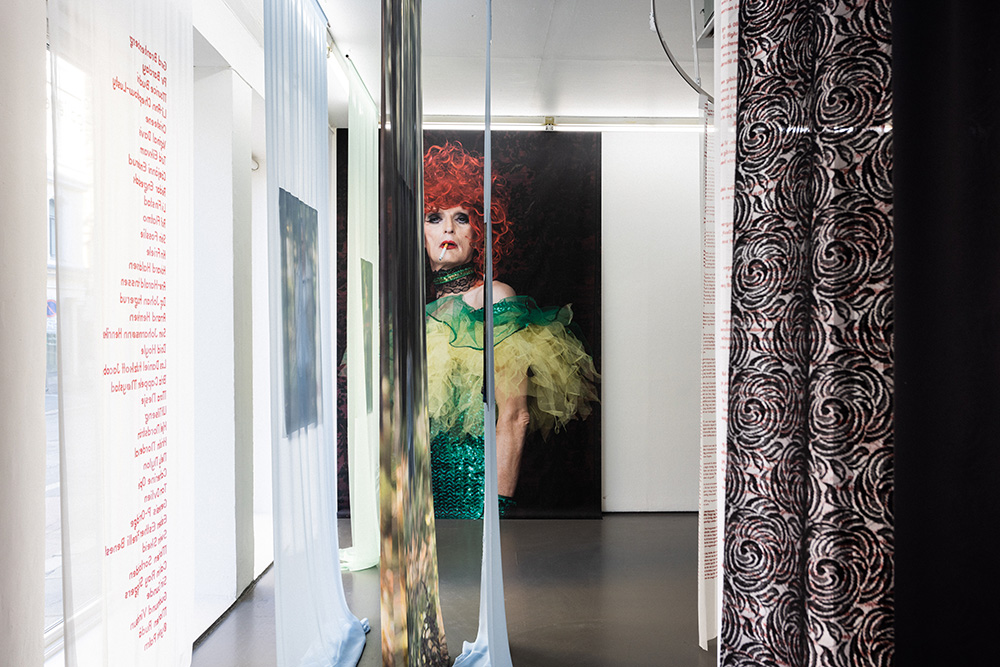
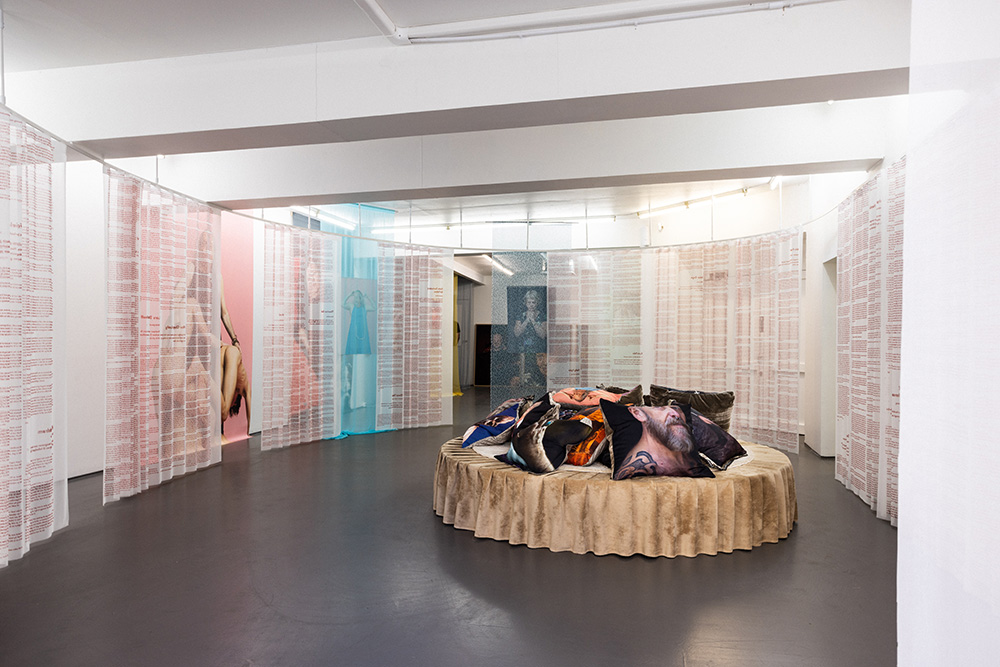
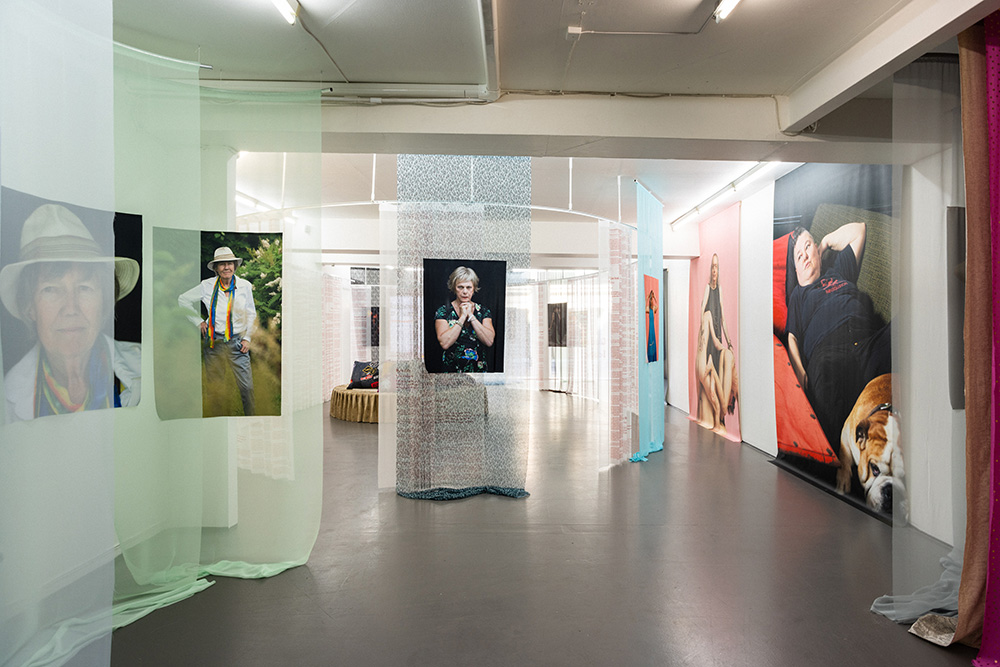
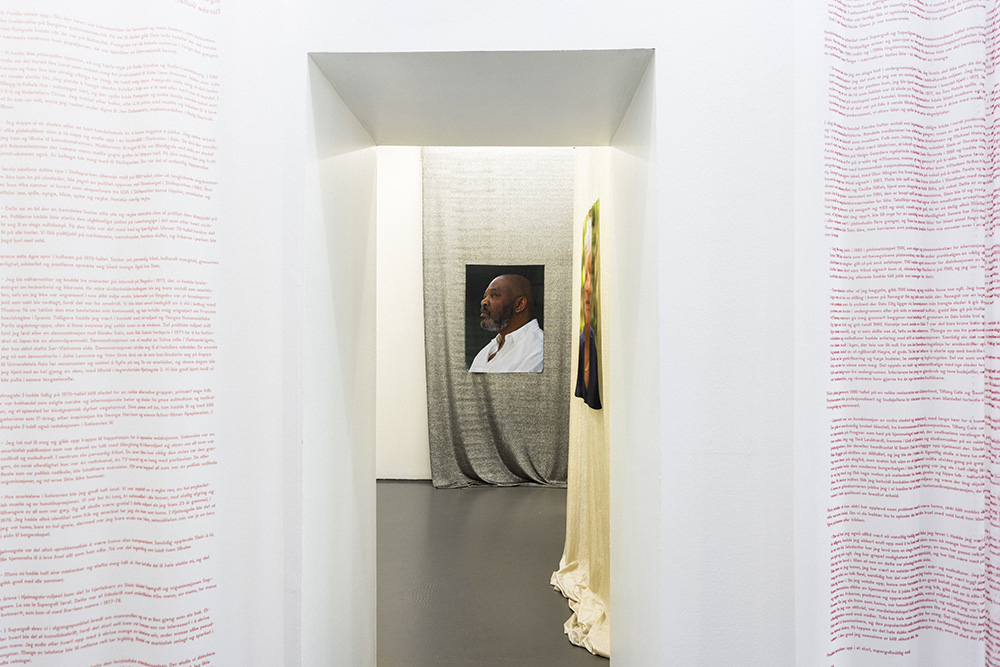
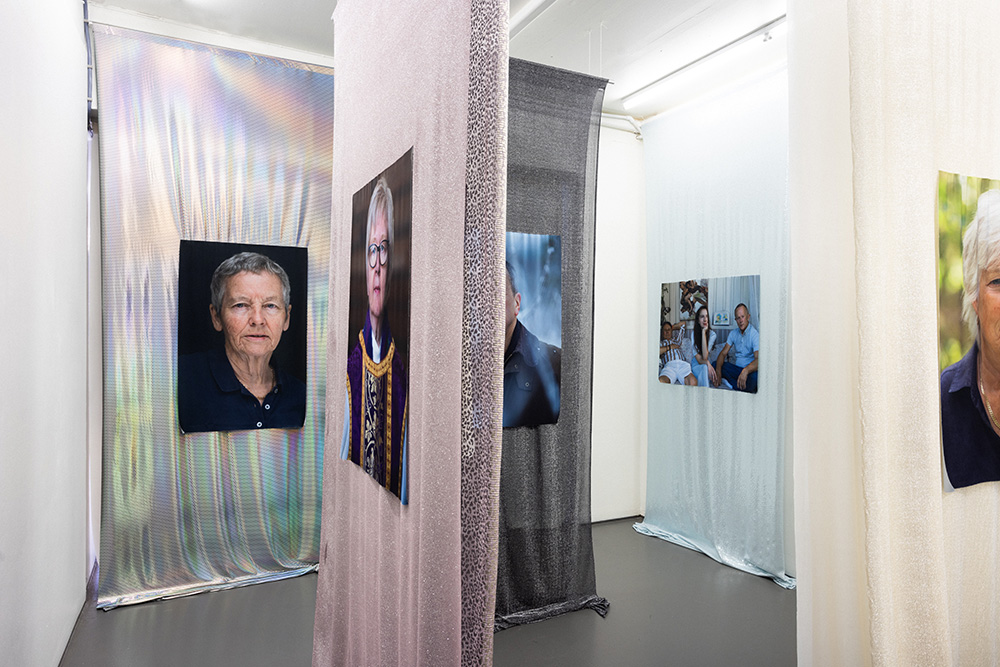
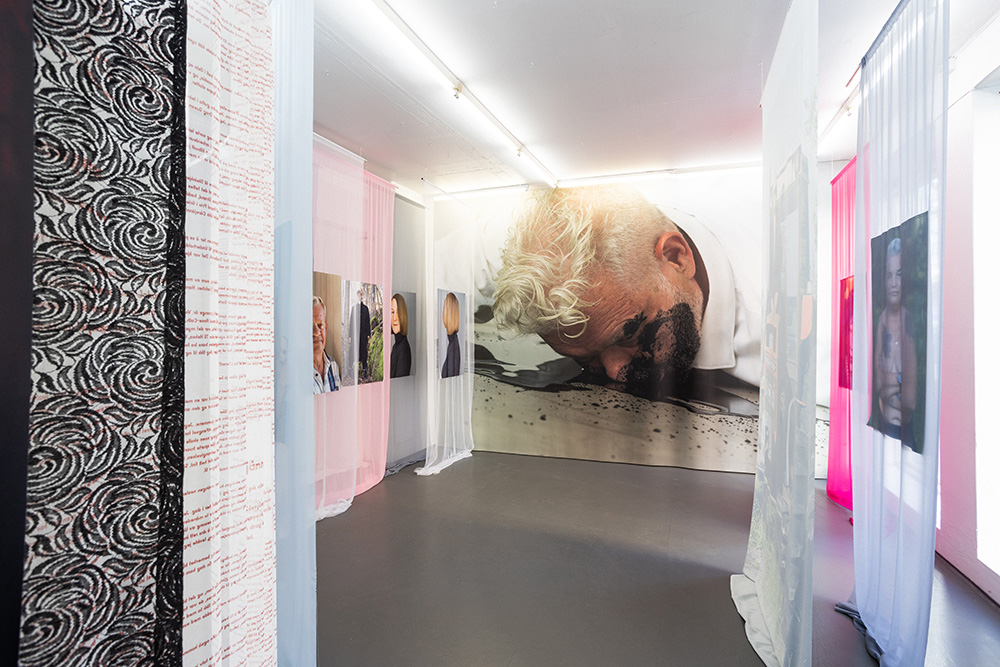
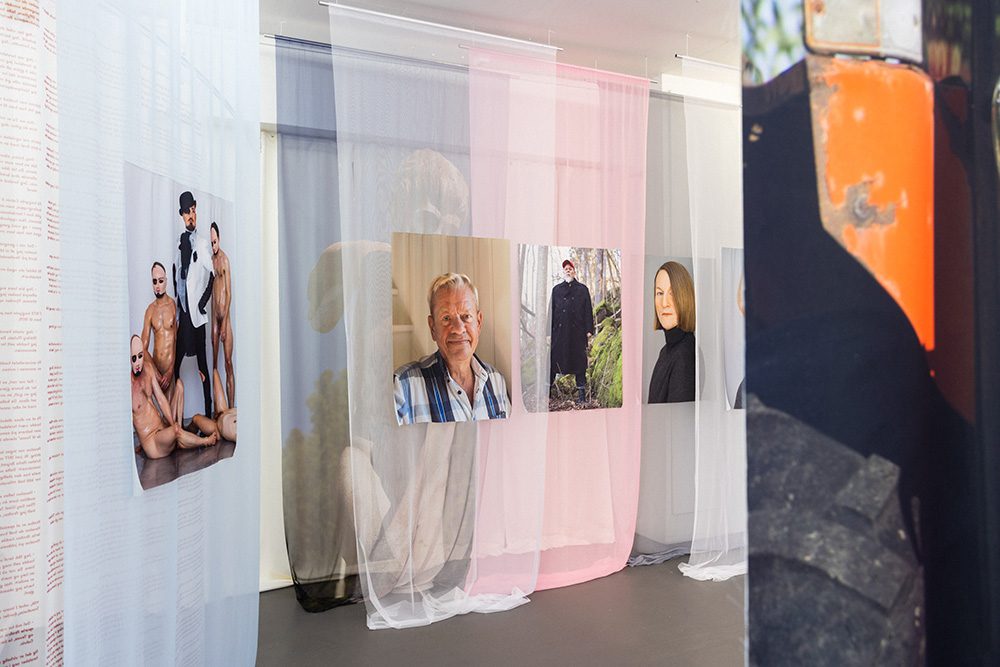
On my part, the lasting impression of Skeivt Kulturår is one that highlighted structural biases in the art system. Repeatedly drawing on a small group of practitioners – with a few artists and curators responsible for the programming at several institutions – does not widen the field or open up for the inclusion of new voices. This point is not intended as a dig at these individuals. I cannot blame anyone for accepting invitations that come their way, especially not when this year of 2022 might be a one-off. There are some exceptions, but it is telling that the higher echelons of the art world – academia and the museum – are still gated communities to which access is only granted temporarily. Real solidarity cannot be a short-term thing, and as the dust settles on Skeivt Kulturår it will become clear who is committed to longevity and who was only along for the party. To pick up on my strange epithet from 2019, I think for many “practising” queers, there is a sense of relief that it is over. However, I also have a feeling that this was a missed opportunity to provide some welcome financial support and greater visibility to smaller artist-run initiatives that do invaluable work.
• I would like to thank my partner, Anne Szefer Karlsen, for in-depth conversations about this text and for their continued culinary, physical, emotional and sartorial support.
** In the interest of full disclosure, I have been involved in the following projects I mention in the text: as initiator and curator of the MUNCH Triennale: the machine is us; as a co-curator with Ingrid Moe of both Bendik Giske’s Not Yet and Brendan Fernandes’s in/visible at MUNCH in March and November 2022 respectively; and as an invited guest to the panel discussion Plattform: Queer Methodologies in Curating and Art on 25 June 2022. I have also been involved with Karmaklubb* from its inception in various capacities and commissioned them to create the party for the opening of the final project of Munchmuseet on the Move: Summer Night by the Beach – a film cabaret by Kirsten Astrup & Maria Bordorff (2019).
Dr. Tominga O’Donnell is Senior Curator of Contemporary Art at MUNCH, where she/they curated the programme Munchmuseet on the Move (2016–2019), adopting a queer curatorial approach and commissioning a range of off-site art projects. At the new museum on Oslo’s waterfront, O’Donnell is the curator of solo exhibitions with Camille Henrot, Sandra Mujinga, Piya Wanthiang and Admir Batlak; the inaugural MUNCH Triennale – the machine is us together with Stefano Collicelli Cagol; and a series of performance commissions in collaboration with Ingrid Moe, which include new works by Manuel Pelmuş, Bendik Giske, Camille Norment, and Brendan Fernandes. O’Donnell has been Associate Professor in the theory department at the Art Academy, University of Bergen (2018–2022) and a visiting professor at the Art Academy/KHiO in Oslo.


